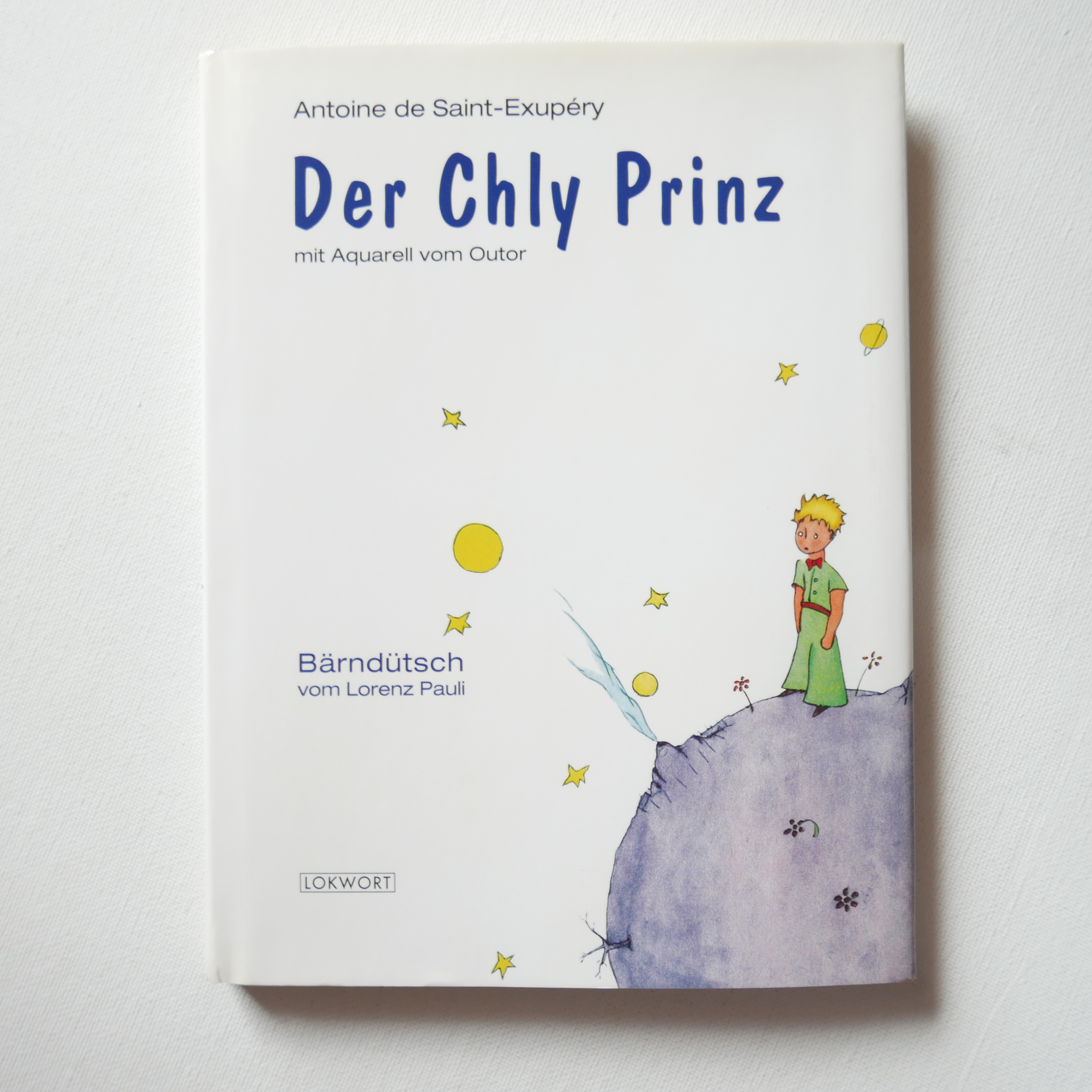
Der Chly Prinz, in Bernese German.
The Bernese dialect, known as “Bärndütsch” or “Berndeutsch,” is a variant of Swiss German spoken primarily in the canton of Bern, the capital city of Switzerland, and surrounding areas. It is one of the most distinctive and recognisable dialects of Swiss German, characterised by its unique phonetic, lexical, and grammatical features. The Bernese dialect is not only a linguistic phenomenon but also a significant cultural identifier for the people of Bern.
Bernese German is known for its distinctive vowel lengths, with long vowels often appearing in stressed syllables. This feature can significantly change the meaning of words. The dialect has a rich use of diphthongs (combined vowel sounds) and monophthongs (single vowel sounds), which can differ notably from Standard German and other German dialects. The pronunciation of certain consonants can be softer or altered compared to High German. For example, the German “k” can become a “ch” sound in Bernese.

Bernese German has its own rules for verb conjugation, which can vary significantly from Standard German. The dialect often retains some older grammatical forms that have disappeared in other dialects or in the standard language. The dialect has unique forms for definite articles, which can vary depending on gender, number, and case, and are distinct from those in Standard German.
The Bernese dialect has a rich set of vocabulary that is not found in Standard German or other dialects. These include words related to local culture, cuisine, geography, and daily life. Over time, Bernese German has incorporated words from French, Italian, and other regional languages, reflecting Switzerland’s multilingual heritage.
Like other Swiss German dialects, Bernese German does not have a standardised orthography. Writing tends to be phonetic, with individuals writing words as they are pronounced. However, there are efforts and guides to provide some consistency, especially for published works in the dialect.
The Bernese dialect is a strong marker of local identity and pride. It distinguishes the Bernese from other Swiss German speakers and plays a crucial role in the social cohesion of the community. It is not just a means of communication; it embodies the cultural heritage, traditions, and identity of the Bernese people. Its continued vitality reflects the community’s commitment to preserving its linguistic diversity amidst the pressures of globalisation and language standardisation.


